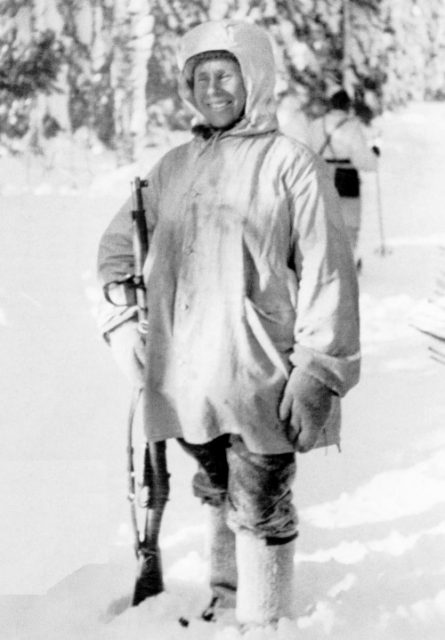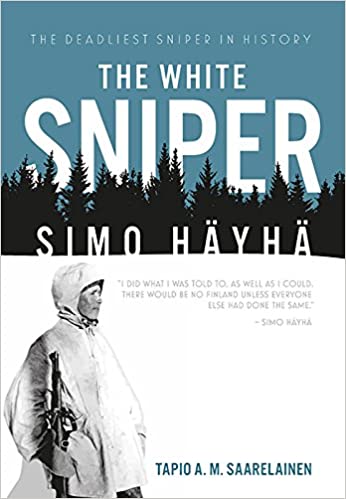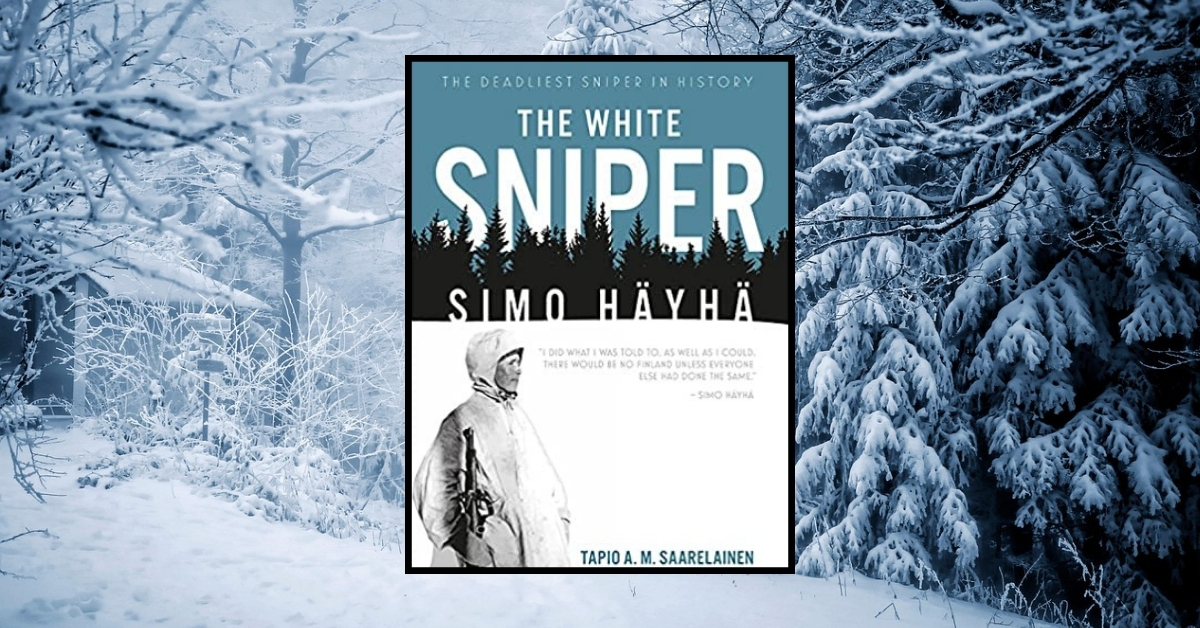Just about anyone with an interest in military history will have seen some imagery from Finland’s Winter War with the Soviet Union of 1939-40. It was a conflict launched by Stalin to beat down and take territory from a smaller neighbour that had refused to cower to bullying and threats happening at a time when much of the rest of Europe was embroiled in the early phase of World War II. Soviet Russia’s attack on Finland aroused strong feelings in sections of the British establishment and a number of soldiers were prepared to volunteer to fight there. This might have been precipitous for Anglo-Soviet relations, to say the least, but the pace of events and the harsh prospect of simultaneous conflicts with Nazi Germany and the USSR could never be countenanced. All this is a digression but it sets the scene a little.
This absorbing book by Tapio AM Saarelainen tells the story of one of his country’s greatest heroes. The author is a serving officer in the Finnish army where he trains snipers. It is important to place the skill within the context of rural Finnish life where hunting with a rifle was and remains a treasured art. Believe me, art is the correct term to use, because the skill and care involved takes years to hone and it is far from a mechanical process learned simply by rote. The author gives the strongest impression that there is something deeply cultural, almost spiritual to it.

Step up Simo Häyhä, an uncomplicated farmer who lived for the outdoors. He was a quiet, modest man who did not leave a flashy footprint on his journey. He progressed to become an incredibly skilled marksman, knowledgeable in field craft and all the other tools of his trade. His ability to shoot quickly with a bolt-action rifle was part of the job; but it appears he was especially fast.
The author takes us through Simo’s pre-war life as a farmer, member of the Civil Guard and his two years of national service. Much of this encompasses our hero’s education with a rifle.
We progress to the Winter War, itself, where Simo Häyhä achieved five hundred and forty two confirmed kills over a considerably short period of time before he was seriously wounded. Mister Häyhä was not just handy with a rifle; he was expert in the use of submachine guns and other weapons. He took part in battles in addition to his better-known work as a sniper. He was the archetypal total soldier.
The author was the only person to gain a significant amount of access to Simo Häyhä where he carefully built a useful working relationship with the man. The great sniper slowly revealed some detail of how he achieved his huge kill tally and some of the tricks of his trade. It is no accident that the author would be an expert shooter, himself, because this sort of talk would be lost on a layman like me. It is stunning to realise that he only ever shot over iron sights and never used a scope.
The author takes time to explain the development of a number of rifles in Finnish service and how these weapons, particularly captured Russian equipment, were improved upon by Finland’s armourers. Häyhä only ever used one model of rifle and guarded his own with care.

There is much to say about Häyhä’s legacy and his standing within the world of the military sniper. Who knew there was a league table? Mister Häyhä is firmly at the top and perhaps his lead is unassailable. The period of this book when our hero was treated for a terrible bullet wound to his face shows another side to a man who did not allow disfigurement to slow him down. This serves to make him seem all the more remarkable. He went on to live a quiet and dignified life where he was often on call to lend his stature to the Finnish army’s shooting competitions. It is clear the author treasures the relationship he enjoyed with his subject.
The heroic Finns of my younger days were rally drivers. The Flying Finns were a cluster of ice-cool super technicians behind the wheel who won many titles and even more friends and admirers around the world. It was in the days when the greatest exponents of the sport were up close to the fans of rallying; they were approachable and there was a spirit of togetherness not found elsewhere on tracks and circuits where the real money was to be made. These drivers seem to have taken the adulation, such as it was, as being part of the process and I can see this is clearly a national trait because it echoes Simo Häyhä in every sense.
I really enjoyed this book. The author takes us into a landscape and a conflict often ignored in the wider world of military history. The world of sniping and snipers has recently been dominated by conflict in Iraq and Afghanistan where modern technology and the appliance of science have been added to the arsenal of the person pulling the trigger (Joe LeBleu’s Long Rifle immediately springs to mind). There was Simo Häyhä, fighting in freezing temperatures against an enemy vastly superior in numbers and quantity of materiél. He was truly feared by his enemies and his devotion to his craft and, yes, the tally of kills tells us why. Fascinating stuff.
Reviewed by Mark Barnes for War History Online

THE WHITE SNIPER
Simo Häyhä
By Tapio AM Saarelainen
Casemate Publishers
ISBN: 978 1 6200 855 4
